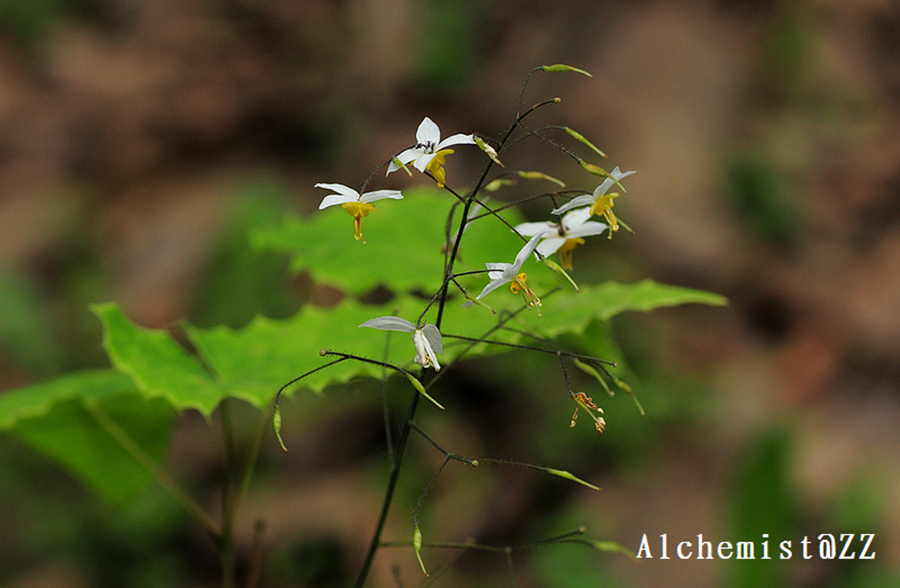- Scientific Name: Epimedium pubescens Maxim.
- Ref: Bull. Acad. Imp. Sci. Saint-Pétersbourg, sér. 3, 23:309. 1877
- English Common Name: downy barrenwort
- Chinese Common Name: 柔毛淫羊藿 róumáo yínyánghuò
- Family: Berberidaceae
- Genus: Epimedium
- Distribution: Forests, thickets, slopes, shaded and wet places; 300-2000 m. Anhui, Gansu, Guizhou, Henan, Hubei, Shaanxi, Sichuan.
Photo: 03/31/2013
Herbs, 20-70 cm tall. Rhizome short, stout, sometimes elongated. Leaves basal and cauline, trifoliolate; cauline leaves opposite; petiolules ca. 2 cm, sparsely pubescent; leaflets adaxially deep green, shiny, ovate, narrowly ovate, or lanceolate, 3-15 × 2-8 cm, leathery when mature, abaxially densely pubescent to tomentose with numerous fine multicellular spreading or curled gray hairs densest along primary veins and at insertion of petiolule, base deeply or shallowly cordate with usually rounded lobes, those of lateral leaflets unequal, margin spinose-serrate, apex acuminate or shortly acuminate. Flowering stem with 2 opposite trifoliolate leaves. Panicle loose, 30- to more than 100-flowered, 10-20 cm, with peduncle 3-5-flowered, usually rachis and pedicels glandular pubescent. Pedicel 1-2 cm. Flowers ca. 1 cm in diam. Outer sepals purplish, broadly ovate, 2-3 mm; inner sepals white, lanceolate or narrowly lanceolate, 5-7 × 1.5-3.5 mm, apically acute or acuminate. Petals pale yellow, saccate, much shorter than inner sepals, blunt. Stamens prolonged, ca. 4 mm; anthers ca. 2 mm. Pistil ca. 4 mm; style ca. 2 mm. Capsules oblong; style long rostrate. Fl. Apr-May, fr. May-Jun. 2n = 12*. (Flora of China)
